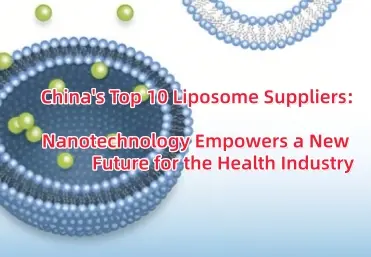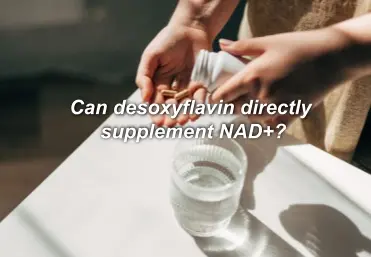Pterostilbene vs. Resveratrol
Pterostilbene & Resveratrol Similarities
As antioxidants, Pterostilbene and Resveratrol work to neutralize free radicals that can lead to cellular damage. Free radicals occur as a result of your body's natural processes, but you want to keep them to a minimum to avoid premature aging, dementia, cancer, and other “age-related” conditions. That said, some of these pesky substances are actually needed to provide certain signals for metabolism. It is really excessive amounts of oxidants that become a problem.
Both Resveratrol and Pterostilbene can help reduce chronic inflammation, balance cholesterol levels, and improve overall heart health. They are known to be powerful antioxidants. These supplements can reduce low-grade chronic inflammation by combating oxidative stress and inhibiting COX-2 enzymes. (COX-2 enzymes are responsible for converting arachidonic acid into damaging pro-inflammatory molecules).

Pterostilbene & Resveratrol Differences
Pterostilbene also helps regulate metabolism. It can help increase insulin sensitivity, and decrease blood glucose levels. Pterostilbene helps with the metabolic process of turning glucose to energy. This can complement a weight-loss routine when paired with a healthy diet and exercise. There is no magic bullet for weight-loss. A healthy is always needed.
Resveratrol, on the other hand, increases AMPK activation. AMPK activation has been shown to reduce the effects of aging on the body's cells, while acting as a cellular energy sensor that helps restore energy homeostasis. Resveratrol also stimulates Sirtuin protein activity. Sirtuins are a group of proteins that regulate metabolism, stress responses, and benefit the aging processes. Sirtuins are heavily active in DNA mutation repair.

As you can see, both these antioxidants are highly beneficial in similar, but also unique ways throughout the body. It's important to note that Resveratrol has been studied longer than Pterostilbene in regards to human health, and yet, despite its many benefits, Resveratrol doesn't have the same bioavailability as Pterostilbene.
While both Pterostilbene and Resveratrol fall within a class of compounds referred to as stilbenes, they are slightly different structurally. The primary difference between the two is that Pterostilbene is more lipophilic. This allows it to pass through cell membranes easier, making it more efficient in this regard. Regardless of Resveratrol's lower bioavailability, it's still highly beneficial as an antioxidant and offers extensive benefits.
Resveratrol and Pterostilbene are two natural plant compounds. Resveratrol is found in grape skins and red wine and is separated from the root in Japanese knotweeds. Pterostilbene is mainly present in blueberries; however, it is also isolated from cocoa, grapes, and peanuts.
Resveratrol and Pterostilbene belong to a group of compounds called stilbenes. These phenolic compounds contain two aromatic rings containing the hydroxyl group (-OH). Resveratrol contains three hydroxyl groups, while Pterostilbene has only one. Two groups are replaced by the methoxy group (O-CH 3) in Pterostilbene.
The variation in the number of hydroxyl groups is essential as it influences the speed at which the compound is metabolized and removed from the human body. Three hydroxyl groups in the resveratrol molecule accelerate the elimination process, making it more difficult to reach and maintain significant levels of Resveratrol in the bloodstream.
With a single hydroxy group per molecule, Pterostilbene can stay in the bloodstream longer. The slight variation in the structure makes Pterostilbene more liquid. Pterostilbene has a more remarkable ability to move through cell membranes, making it easier to assist in cellular pathways.
Pterostilbene and Resveratrol are found naturally in two different forms, cis and trans. The trans type is more stable and abundant in nature. Studies have shown that these trans are better than Cis forms in biological activities for Pterostilbene and Resveratrol.
Two years ago, scientists discovered that Resveratrol reduced the yeast rate of aging cells. In 2003 Harvard Medical School Professor found that Resveratrol triggered a longevity gene called SIRT1 and the resulting sirtuin protein class.
The exact mechanism was examined and proved to be the case in mice. Research on Resveratrol has shifted towards its impact on human health. Resveratrol has been found to help sustain the cardiovascular system, protect against antioxidants in glucose metabolism, maintain a healthy balance from +Inflammageing, and much more. After publishing the results of this research, people became more inclined to drink red wine rich in Resveratrol and to take supplements containing Resveratrol.
However, the most significant obstacles to reaping the benefits of Resveratrol in humans seem to be its low bioavailability and rapid elimination from the body. Nevertheless, a drug that is gaining some attention could overcome these obstacles.
Scientists became interested in its molecular counterpart, Pterostilbene, about ten years after discovering that Resveratrol activated the longevity gene. While it is found at higher concentrations in blueberries than in red wine, Pterostilbene is nearly the same chemical structure as the chemical structure of Resveratrol.
The initial human safety study of Pterostilbene was published in 2013, and research has been accelerated since then. Pterostilbene is promoted to be the most vital form of Resveratrol. It is said to deliver the previously known benefits of Resveratrol with higher bioavailability. Are these claims accurate? Check out this article for an in-depth analysis of these two compounds.
Related Products: Pterostilbene,Resveratrol
References
https://www.thehealingsole.com/blogs/news/pterostilbene-vs-resveratrol?srsltid=AfmBOort3bq9wfmBCHr4dP8EPyBoAdlW31ZOrJ7dejWBpupMeNuB0TGz
https://www.revgenetics.com/a/news/resveratrol-vs-pterostilbene?srsltid=AfmBOooFtmGKtfnLR9WKq80lrHw8F3_zsOJjo9GiAjeiU2IuLExmROpV

 Food Additives
Food Additives









